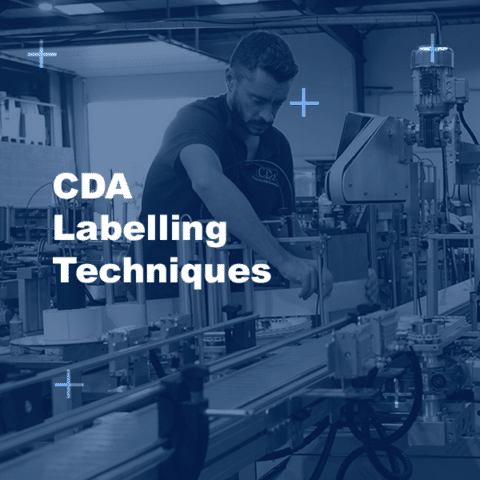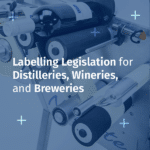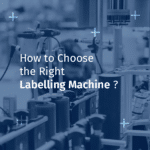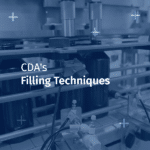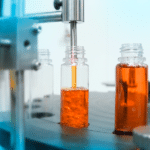Labelling plays an essential role in the packaging industry, where every detail counts to guarantee the quality of the final product. At CDA, specialists in filling and labelling machines, innovation is at the heart of our mission to meet our customers’ needs.
In this article, we explore the different labelling techniques used by CDA and highlight three commonly used approaches: ‘3-point’, ‘banding’ and ‘on-the-fly’. We’ll also look at other existing techniques (albeit more briefly) and give you some tips on how to choose the right labeller.
The “3-point” technique
The “3 point” technique is the most accurate labelling method. It is suitable for cylindrical and conical products, such as bottles and flasks. This method involves rotating a product on itself (using a smoothing roller and a pressure plate cylinder). As it rotates, one or more labels are dispensed and applied.
Thanks to its versatility and reliability, the “3-point” method has become a preferred choice for many companies wishing to guarantee quality labelling on cylindrical products.
The advantages of this technique include :
- Precision: The three support points ensure that the label is positioned with great precision, avoiding any shifting or creasing.
- Aesthetics: This technique is the most versatile: up to 4 labels can be applied per container. It also offers the best results on tapered products.
Banding
Banding is a labelling technique that involves rotating products using motorised bands (which “sandwich” the container). As a result, the label wraps around the container, smoothing out the edges. This is an ideal method for cylindrical products that require a single label (often ‘wrapping’ around the product).
The advantages of banding include
- Security and protection: Banding can hermetically seal the product, offering protection against contamination or deterioration.
- Time saving: allows high production rates (the product never stops) which is essential in large-scale manufacturing environments.
“On-the-fly” labelling
“On-the-fly” labelling is a technique for applying labels to products that are in continuous motion (via a conveyor or starwheel). It is an extremely effective approach for high-speed production environments.
The advantages of “on-the-fly” labelling are :
- High speed: labels are applied to products without stopping, enabling high speeds to be achieved.
- Versatility: this technique can be applied to cylindrical products as well as square, rectangular, oval and other shapes.
Other Labelling Techniques
In addition to the techniques mentioned above that we use at CDA, there are other labelling methods. These methods are adapted to specific needs.
These include
- Top – bottom labelling: This placement mechanism was developed for simultaneous top and bottom labelling of products. It is mainly used for very thin or flexible items that cannot be labelled on their sides, such as the thermoformed trays commonly used in the food industry.
- Pressure-sensitive labelling: This technique is suitable for heat-sensitive products, where the label is pressed onto the product for optimum adhesion.
At CDA, we offer a wide range of labelling machines, from semi-automatic to automatic labellers. Our automatic machines can be equipped with “3-point”, “on-the-fly” or “banding” systems. This wide choice enables us to meet a wide range of needs.
